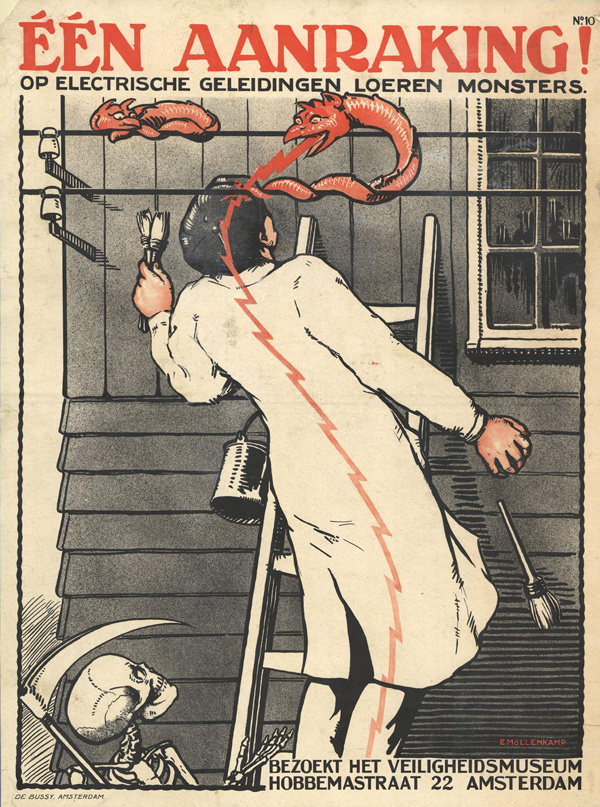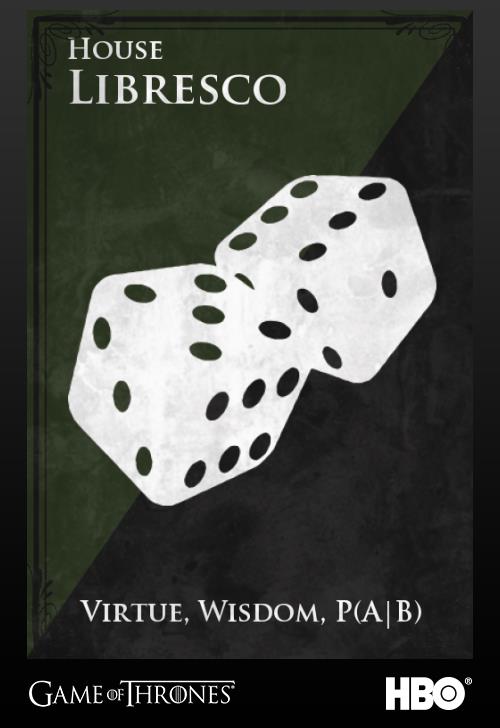If I kept a gratitude journal, I’d start every day’s entry with “I am grateful I’m not in law school.” (I hear all the cool parts from my law schools friends or Law and the Multiverse, anyway). But, after seeing beckwithmw’s visualization of thesis length by subject, I’m prepared to add my non-attendance at a lot more grad schools to a daily litany of thanks.
The tails and travails of my friends were enough to keep me safe from these grad schools, but, if I noticed my will or good judgement slipping, I could always try ringing up the people who made these Dutch safety warnings to make me a personal motivational poster. This one was my favorite:
One blog post I found electrifying (in the good way) this week was one of Chana Messinger’s contributions to the SSA blogathon. It’s titled, “Maaaaaaaaath.” Frankly the title was enough for paroxyms of delight, but once I got my smelling salts and recovered enough to read on, it was all she had promised:
[M]ath has a language, and it’s not an easy one to learn. There are all the symbols, for one: numbers, logical operators, less than, more than, exponent, subscript, and on and on until you think you’ll drown in them. And then there are the rules for how they fit together. This implies that. Why again? Oh yes, because this. And that makes sense because? Oh, right. But eventually, if you follow math far enough, you develop a deep respect for mathematical notation, its minimalism, its utility, and you begin to deeply distrust anyone who says, “Math would be fun, but why are there so many symbols?” (Though of course, there’s tons of math to be done without them. You get to make the rules, remember?). But you also get to criticize notation, decide that some is better than others, and take sides on Newtonian vs Leibnizian differential notation.
But because it is in some sense, a language, I wish it was taught like one. I wish that young children read proofs without fully understanding them, just as we are encouraged to read texts in Spanish without looking up every single word. I wish we contented ourselves with the gist of the proof, the point, so that we learned to prioritize the meaning over the form, just as we may not be able to word-for-word translations of our French teacher’s request, but we know it’s time to sit down.
In order to get people excited about science a bit more briefly, students at the Albert Einstein Institute made Game of Thrones-style sigils for various scientists and projects. But you’ll have to click through to see them, as I’ve reserved this Take’s image slot for the House Sigil a friend designed for me (in Slytherin colors, no less!)
Oooh, and while we’re getting excited about data analysis, have you seen the research a physicist did using the dollar bill tracking website Whereisgeorge.com to draw some non-state boundaries on the U.S. map? Think of the different sections as basins that dollars are much more likely to move around in than to move between.
And also in the realm of fun analysis, Stephen Wolfram took apart a ream of data about facebook and has nice visualizations for:
- distributions of number of friends
- number of friends plotted against age
- the distribution of marriages by age as tracked by facebook vs as tracked by the census
- how many distinct friend clusters people belong to
- the most common cluster patterns
- Wheeee!
Let me let the NYT haiku bot (discussed here) impose some structure and theme on this week’s Takes:
Elsewhere, it sounds like
an inchoate assembly
of inspirations.
For more Quick Takes, visit Conversion Diary!
















